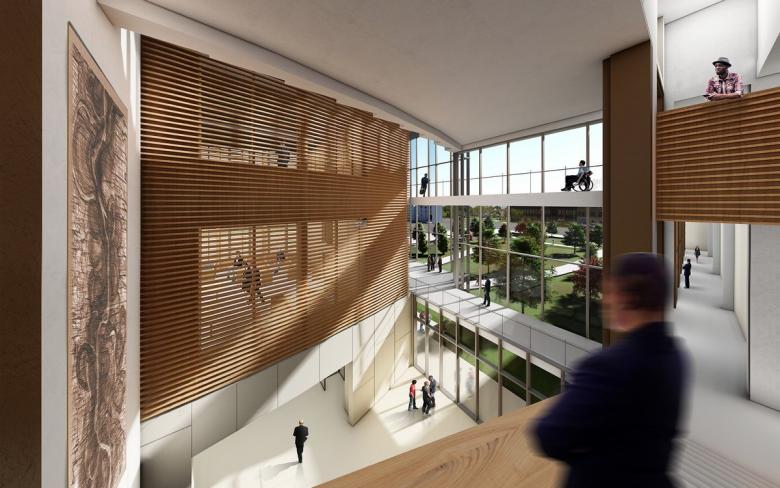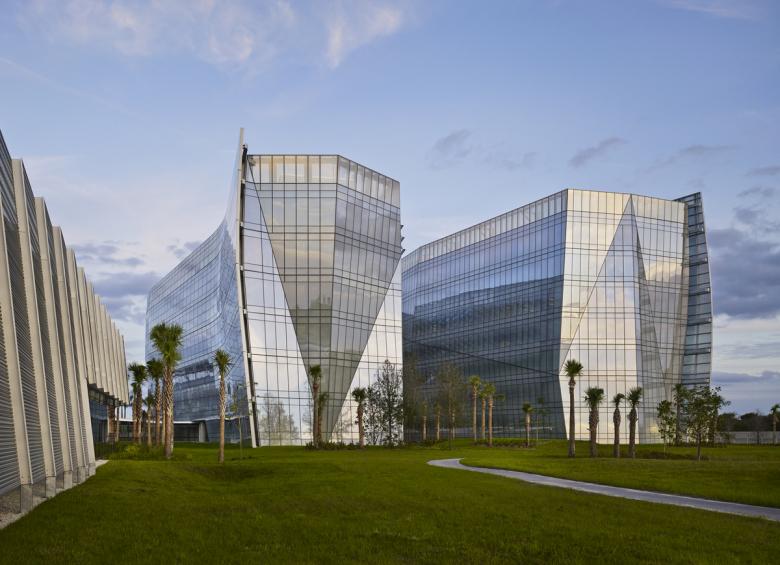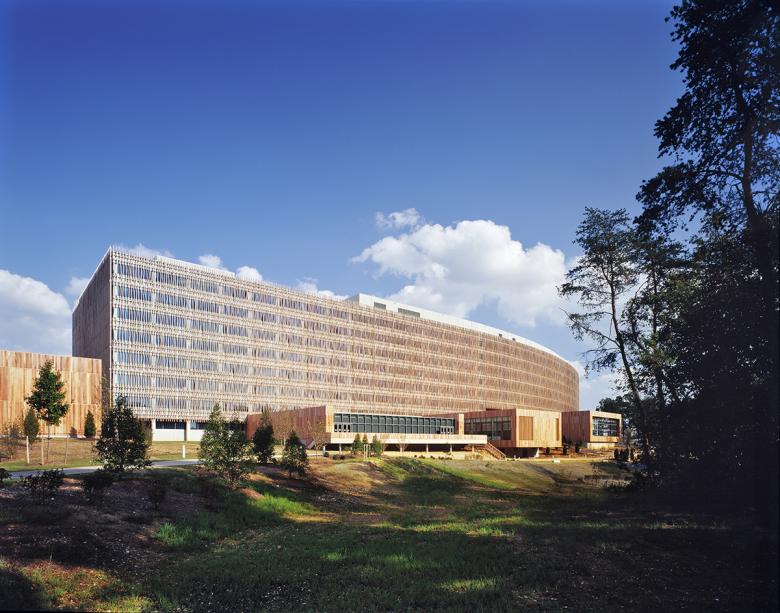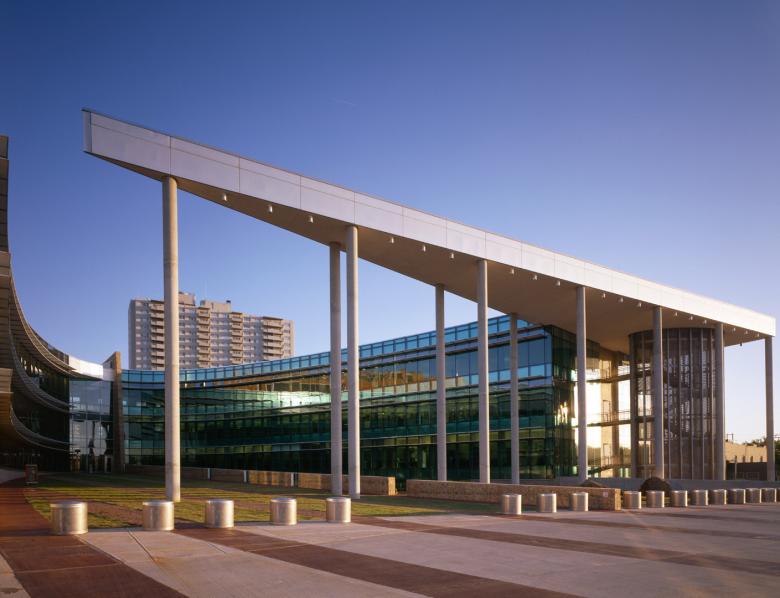Taking on Trump
Since news broke on February 4th of a draft executive order that would establish a classical style for new federal buildings in and beyond Washington, DC, architecture critics have been addressing the implications of what is titled "Making Federal Buildings Beautiful Again." We've assembled a few snippets.
The story broke at Architectural Record: The draft order would "require rewriting the Guiding Principles for Federal Architecture, issued in 1962, to ensure that 'the classical architectural style shall be the preferred and default style' for new and upgraded federal buildings." Soon after, news outlets and architecture websites, including this one, picked up the story, and then critics and organizations started to weigh in on the draft order. Focusing on the latter, below are excerpts from some of the many critiques of "Making Federal Buildings Beautiful Again" (we'll add more as we find ones worth featuring), as well as a couple institutional statements against the draft order's call for a single style of architectural diversity, and images of federal buildings designed by World-Architects member firms in the decades since those Guiding Principles said "an official style must be avoided."
Who knows what classicism ultimately means, but the draft order makes it come across as awfully prim and petty. No matter how much its supporters say that enforcement wouldn’t be dogmatic, the order provokes inevitable allusions to authoritarian regimes of the past that imposed their own architectural marching orders, and dredges up images of antebellum America, when classicizing, Federal architecture was all the rage. [...] The draft order praises the Washington building now known as the Eisenhower Executive Office Building as “beautiful and beloved.” Harry Truman called it the “greatest monstrosity in America.” Suffice it to say that taste changes and style, by definition, is the most superficial criterion for evaluating architecture.
Whether this executive order is implemented or not remains to be seen. Presumably, common sense will prevail and this ill-conceived directive will be rejected, either in this administration or one that follows. So let’s be clear about what it is: a waste of time, a needless distraction at a moment when the profession of architecture has far more serious issues to address: the potentially catastrophic effects of climate change, persistent housing shortages and energy efficiency, to name just the most obvious. Let’s focus on those challenges, and not waste our most precious architectural commodity: time.
While the National Trust values -- and protects -- traditional and classical buildings throughout the country, to censor and stifle the full record of American architecture by requiring federal buildings to be designed, and even altered, to comply with a narrow list of styles determined by the federal government is inconsistent with the values of historic preservation. The draft order would put at risk federal buildings across the country that represent our full American story, and would have a chilling effect on new design, including the design of federal projects in historic districts.
The AIA strongly condemns the move to enforce a top-down directive on architectural style. Design decisions should be left to the designer and the community, not bureaucrats in Washington, DC. All architectural styles have value and all communities have the right to weigh in on the government buildings meant to serve them.
Buildings designed under Trump’s mandate would “convey the dignity, enterprise, vigor and stability of America’s system of self-government.” The new guidelines would apply as well to the remodeling of modern or contemporary federal buildings. This is such a bad idea. A state-mandated architectural style that retreats so resolutely into the past is an implicit negation of the best of American and world culture over the last few hundred years. It is also the stuff of authoritarian regimes, which always distrust the new and unexpected. It doesn’t go unnoticed here that Mussolini, Franco and a particular failed German art student all pushed for a singular, classically inspired state architecture intended to project tradition, order and the superiority of the state.
We should not be drawn in by this attempt to politicize architecture. Just because the Trump administration has plumped for neoclassical, it does not mean his opponents need to disown it or pick an opposite side. Attempts to reduce the rich, complex history of architecture down to crass polarities should be resisted. If anything, the split in this scenario is between those who trust architects and professionals to design whatever they think is best, and those who seek to control what they do. [...] The former is how a free society does architecture, the latter is literally dictatorship.
Whether we like to admit it or not, Trump is an architectural president—in his professional life as a (failing) developer, he has had his grubby, tiny hands in myriad buildings across the country. Like all building-peddlers, Trump is subjected to the gaze of architecture critics, who have on occasion praised his work but have most often panned it. Though Trump has put up buildings ranging from nineteenth-century retrofits to late-modern skyscrapers, his personal style is a combination of 2000s bling and Louis XIV—nothing in his penthouse Trump Tower apartment is spared a metallic coating. His choice of modernism for the style of the Trump Towers in Chicago and New York can simply be explained away by the fact that modern, all-glass buildings are the hegemonic aesthetic signature of corporate capitalism: It is the style of big business.
Most American architects today work in a mode you could loosely call modernist, but not as a matter of ideology. It’s simply an efficient approach to creating buildings such as high-rises and hospitals with sophisticated modern needs, using contemporary materials and technologies. The neoclassical White House was constructed out of sandstone, a material that could be sourced in Virginia and that expert stonemasons knew how to build with; today, structural steel and curtain-wall glass are available everywhere, familiar to designers and builders, and provide flexibility at a reasonable cost. Modern architecture—which embraced the idea that “form follows function” and includes movements such as Brutalism and Deconstructionism—is itself a century old now. And crucially, classicism and modernism are not opposites; they exist on a continuum, and choosing between them is unnecessary.
While the proposal has yet to reach the president’s desk, the agency that oversees the design of federal buildings is already demonstrating a renewed interest in classical architecture. In February 2019, the agency announced a design change just before the start of construction on a federal courthouse in Greenville, S.C. Instead of a 10-story brick tower, designed to resemble other buildings in the downtown area, the government is now constructing a 10-story concrete tower with classical lines.
I’m saving my outrage. The White House’s proposed architectural edict is a boneheaded idea cooked up by a crackpot cabal of ideologues who hate not just modern architecture but modernity itself. Yet on the scale of Trump’s iniquities, the move barely registers. This administration’s attack on the natural environment is far more dire than anything it could wreak on the built environment.
By deeming “ugly” any building that could be construed as Modernist, Brutalist, or “Deconstructivist” (a stylistic term that appears in the text despite having long fallen, mercifully, into disuse), the drafted proposal has granted further license to an ongoing campaign by MAGA Republicans to effect a kind of damnatio memoriae: to efface the memory not just of the previous president, but of any previous president whose projects or whose policies might cause the current incumbent’s to suffer by comparison—which, not coincidentally, would mean pretty much every president since the advent of modernist design, first introduced into federal architecture under Franklin Delano Roosevelt.
The style wars that consumed generations of architects hold absolutely no interest to younger practitioners. For most architects and designers under 40, these aesthetic battles are seen for what they basically are: an old man’s game, a previous war, with little or no relevance to them or their futures. And they’re right; they’ve got bigger fish to fry, like survival of the species.




